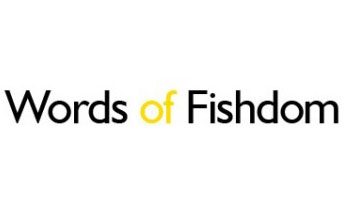Performance Marketing on a Shoestring: 7 Tactics for Small Business Success

Marketing can be a fight for small business owners, especially when they are on a tight budget. Traditional advertising methods can break the bank, and there’s a lot of competition for being online. Bright side? Performance marketing is affordable, result-driven, and costs only when success can be measured – like leads, clicks, or conversions.
Whether you are running a local shop or an e-commerce brand, this guide will help you to leverage performance marketing without breaking the bank. Let’s dive into seven tactics that will maximize impact while keeping your costs low.
1. Focus on Cost-Effective Digital Marketing Channels
When money is tight, every marketing dollar must work harder. Instead of spreading resources too thin, focus on cost-effective digital marketing channels like:
- SEO: It helps your website rank higher on search engines for free.
- Email Marketing: A low-cost method to nurture leads and retain customers.
- Social Media Marketing: Facebook and Instagram have organic reach without ad spend.
Example: A local bakery optimized its Google My Business listing with relevant keywords and customer reviews, increasing foot traffic by 35% without paid ads.
Takeaway: Focus on organic traffic and engagement first, then build paid campaigns.
2. Content Marketing and Blog Posts
Quality blog posts and guides make a company an authority in its industry. This is all while enhancing search engine optimization. A blog post appeals to potential customers and offers lasting value without continuing expenses.
Case study: A boutique fitness studio published a blog titled “5 Simple Home Workouts” that ranked on Google’s first page and generated 2,000 monthly visitors.
Pro Tip: Leverage free tools like Google Trends or AnswerThePublic to find trending topics that are relevant to your target audience.
3. Landing Page Optimization Boosts Conversion Rates
A well-optimized landing page can boost your conversion rate without spending a dime on additional ad spend. Make sure your page has the following:
- Loads within 3 seconds
- Tells your visitors what to do next
- Boasts some attractive visuals and testimonials
Example: A boutique clothing store streamlined its checkout process by introducing a one-click purchase option, and sales increased by 20%.
Pro Tip: Utilize free tools such as Google PageSpeed Insights to audit your website’s speed and performance.
4. Use Email Marketing with High ROI
Email marketing is one of the cheapest yet most conversion-generating marketing tactics. Unlike social media, where algorithms control what is visible, email lets you reach out directly to your audience.
Best Practices:
- Build an email list with a free lead magnet (discounts, ebooks, exclusive content).
- Personalize emails with customer names and past purchases.
- Include clear calls to action to drive engagement.
Example: A home décor store sent out an email campaign featuring “limited-time offers,” resulting in a 40% increase in repeat customers.
Pro Tip: Free email marketing tools like Mailchimp and MailerLite offer automation for small businesses.
5. Run Low-Cost Pay-Per-Click (PPC) Ads
Although paid ads seem like they are too costly, small businesses can easily have very targeted and low-priced PPC campaigns run through:
- Google Ads – Targeting specific niche long-tail keywords reduce competition
- Facebook & Instagram Ads – Retarget those who have visited your site but haven’t converted.
Example: A local pet grooming service ran a $100 Facebook campaign targeting pet owners within 10 miles, and the result was 15 new bookings.
Pro Tip: Begin with a low budget, measure, and expand campaigns that are successful.
6. Leverage Affiliate and Referral Marketing
Affiliate and referral marketing enables you to tap into other people’s audiences for promoting your products. This is performance-based digital marketing-you only pay for actual sales.
- Affiliate Marketing – Partner with bloggers or influencers who promote your products for a commission.
- Referral Marketing – Offer customers discounts for referring friends.
Example: Dropbox’s referral program (offering free storage for referrals) led to a 60% growth in user sign-ups in one year.
Pro Tip: Use affiliate platforms like ShareASale or Refersion to automate commission payouts.
7. Track and Optimize Marketing Campaigns
Follow up and optimize marketing campaigns. Use free or low-cost tools to track campaign performance:
- Google Analytics – It tracks the followings: Website visitors, sources, and conversions.
- Facebook Pixel – Tracks ad effectiveness and retargeting opportunities.
- Ubersuggest – Keyword insights for search engines.
Example: A handmade jewelry store noticed its Google Ads were not converting well. By adjusting its ad copy and call to action, its conversion rates doubled.
Pro Tip: Continuously A/B test a variety of headlines, images, as well as offers to enhance your performance through time.
Conclusion: How to Achieve Big Results with Small Budgets
Not much capital is required for successful performance marketing campaigns. SEO, email marketing, PPC, and affiliate strategy enable small businesses to attract potential customers to engage with and convert without busting the budget.
It’s time to start small, monitor the results, and continuously optimize the marketing approach for maximum impact. Ready to make your marketing dollars go farther? Start using these budget-friendly approaches today and make your business grow! ?
Frequently Asked Questions About Performance Marketing on a Budget
Q: How do I increase my conversion rate without spending more?
A: Optimize your website’s speed, streamline your checkout process, and write compelling calls to action.
Q: Is email marketing dead for small businesses?
A: Absolutely! That is one of the highest ROI digital marketing channels, and you can easily communicate with your audience.
Q: Shall I invest in PPC ads in case I am operating with a tight budget?
A: Start with small targeted campaigns. Focus on niche keywords and retargeting to get maximum ROI.
